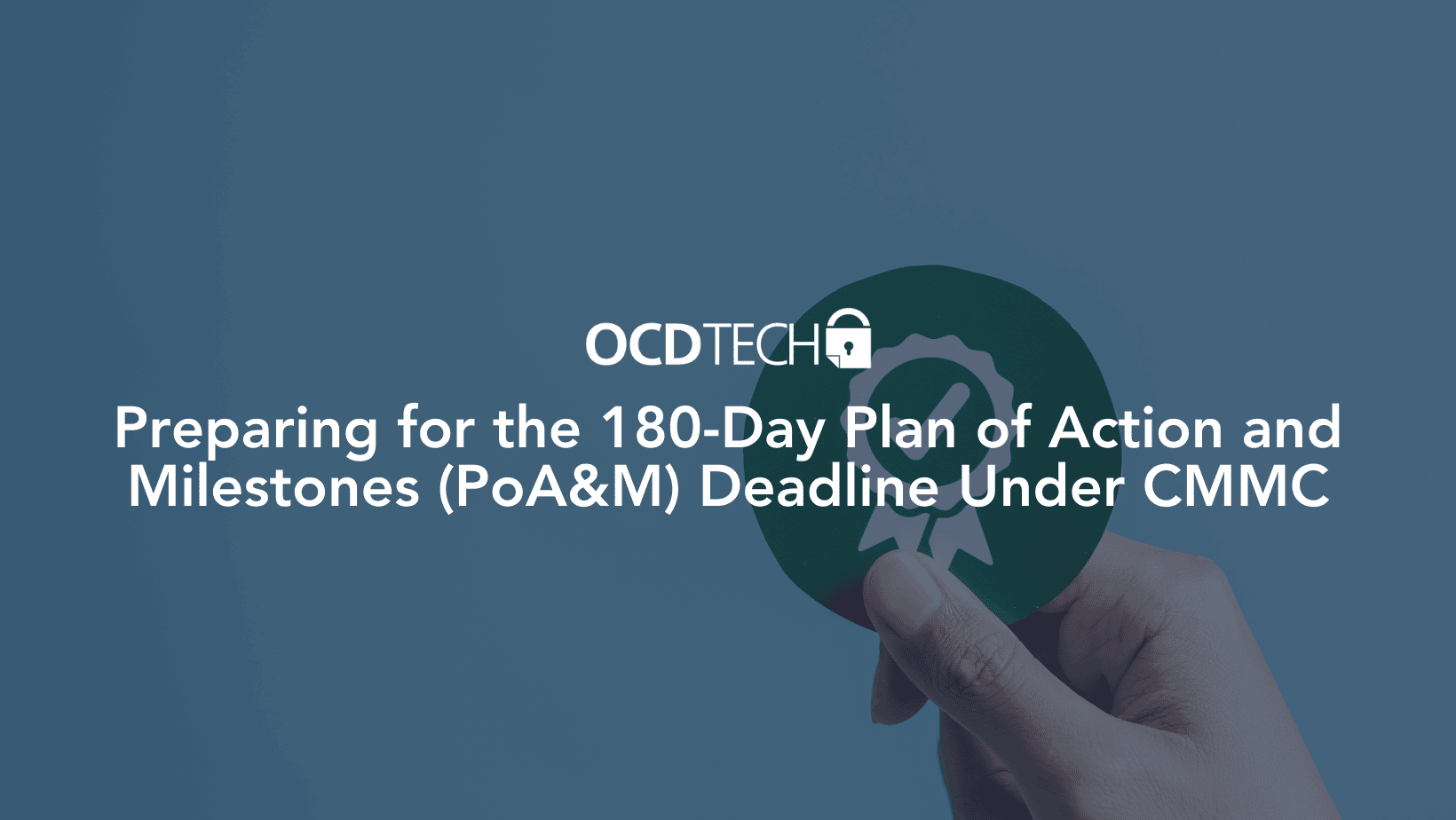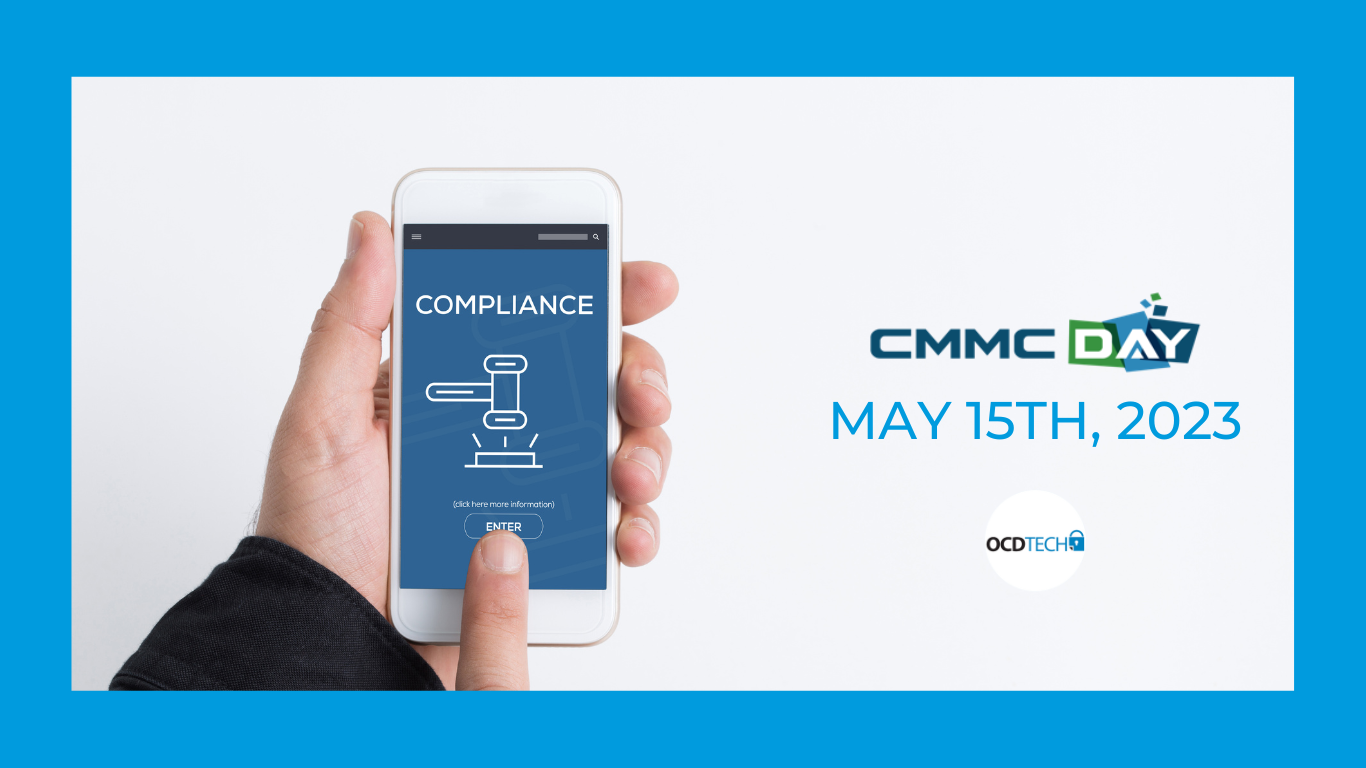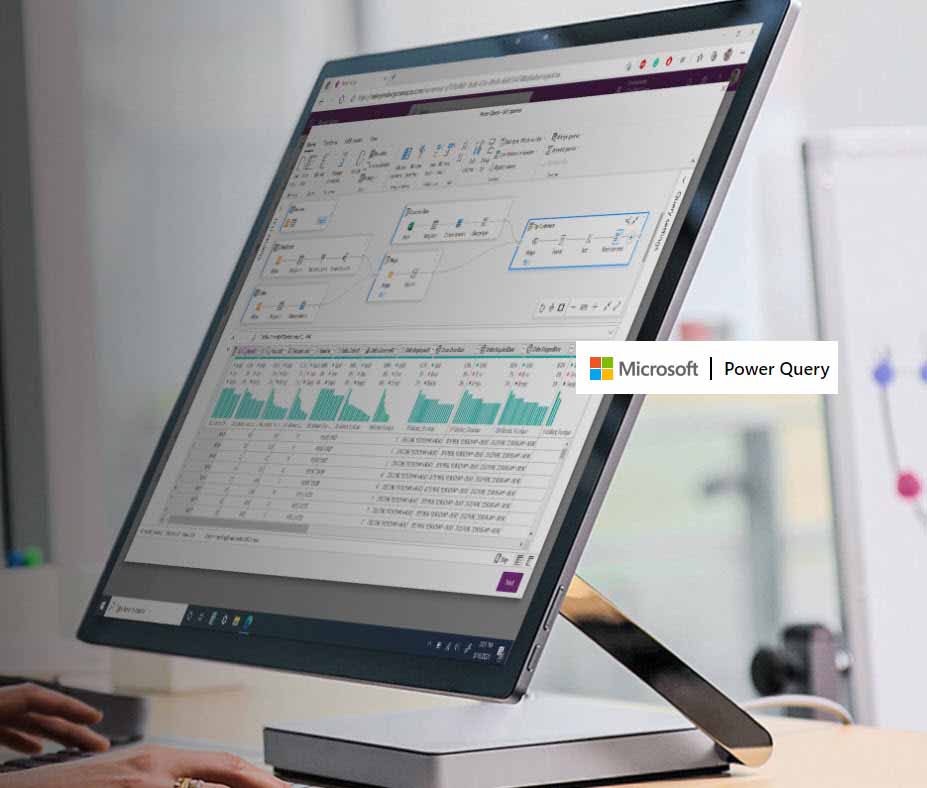Preparing for the 180-Day Plan of Action and Milestones (PoA&M) Deadline Under CMMC

The Cybersecurity Maturity Model Certification (CMMC) framework is pivotal for companies handling Federal Contract Information (FCI) and Controlled Unclassified Information (CUI) in the Defense Industrial Base (DIB). With recent developments and the 180-day PoA&M deadline, it is essential for organizations to understand and align their efforts to comply with CMMC requirements. Here's an updated guide to help you meet the requirements effectively.
The Final Rule on CMMC: What You Need to Know
The Final Rule establishing the CMMC Program, Title 32 CFR, has been released for public inspection and will be officially published on October 15, 2024. This finalization marks a significant milestone in the DoD’s efforts to enforce robust cybersecurity standards within the DIB.
What Does This Mean?
- Public Inspection Phase: Provides a preview of the finalized rule before its formal publication.
- Effective Date: The rule becomes effective 60 days after its October 15 publication, meaning it will take effect on December 16, solidifying CMMC as the governing framework for cybersecurity compliance.
- Limited Self-Attestation: Transitioning from a solely self-attestation based system, the new rule enforces stricter requirements that depend on the specifics of your contract’s assigned level. At Level 1, organizations will rely solely on self-attestation, while at Level 3, only external third-party assessments will be permitted. Most Level 2 contracts will require third-party assessments. Although a small subset of Level 2 contracts may still allow self-attestation, these will be rare. In all cases, annual self-attestation remains an ongoing requirement.
- Key Updates in the Final Rule
- Enhanced PoA&M Constraints:
- PoA&Ms are not allowed at Level 1.
- At Level 2, PoA&Ms are time-limited to 180 days from the assessment conclusion and considered under a “Conditional CMMC Status.”
- To qualify for Conditional CMMC Status:
- 80% of requirements must be met.
- Each PoA&M item may not exceed a 1-point value, with few exceptions.
- All 110 practices outlined in NIST SP 800-171 must be satisfied within the 180-day window for contract eligibility.
- Validation of Closed PoA&Ms:
- Any remediation completed during the PoA&M period will require reassessment to confirm compliance.
- Flow-Down Obligations:
- Prime contractors requiring a Level 2 assessment must impose the same on their subcontractors, ensuring supply chain accountability.
- CUI and FCI Protection:
- The rule reinforces safeguarding requirements, aligning with broader DoD cybersecurity objectives.
Preparing for the 180-Day PoA&M Deadline
The PoA&M serves as a roadmap to address cybersecurity gaps. Meeting the 180-day deadline is critical for compliance and contract eligibility. Here's how to prepare:
1. Align with CMMC Framework Requirements
- Identify your required CMMC Level (1, 2, or 3).
- Map existing controls to the NIST SP 800-171 framework.
2. Conduct a Pre-Assessment
Before finalizing your PoA&M:
- Perform a self-assessment or engage an external consultant to determine your readinenss for certificaiton.
- Identify gaps in cybersecurity practices.
- Review policies, procedures, and evidence for alignment with CMMC.
3. Create a Robust PoA&M
A comprehensive PoA&M should include:
- Deficiency Descriptions: Detail the gaps and their impact.
- Remediation Actions: Clearly outline steps to resolve each issue.
- Timeline and Resources: Assign realistic deadlines and allocate resources.
4. Focus on Critical Areas
Prioritize:
- Controls related to CUI protection.
- High-impact controls that affect multiple compliance requirements.
- Dependencies that unlock other remediation efforts.
Navigating the CMMC Program Framework
The CMMC framework continues to evolve with the introduction of additional rules:
Title 32 CFR
- Establishes the CMMC Program and framework.
- Governs FCI and CUI protection requirements.
Title 48 CFR (Proposed)
- Integrates the DFARS 252.204-7021 clause into defense contracts.
- Enforces CMMC as a contractual obligation.
- The comment period ended October 15, 2024, with publication expected in early-to-mid 2025.
Immediate Actions to Take
To ensure readiness, focus on the following areas:
- Review and Update System Security Plan (SSP):
- Ensure SSPs are comprehensive and accurately reflect your system environment.
- Evaluate Cloud and External Service Providers:
- Confirm compliance of in-scope providers with CMMC requirements.
- Scope Assessment:
- Validate the completeness of in-scope assets and assess control implementation.
- Evidence Collection:
- Gather evidence for all control implementations and remediation efforts.
- Leverage External Expertise:
- Engage consultants such as Registered Practitioner Orgnaizions (RPOs) for guidance and pre-assessment reviews.
Resources and Support
- OCD Tech CMMC Resource Page
- US Department of Defense Press Release
- Title 32 CFR Part 170 (Public Inspection)
- Title 48 CFR Proposed Rule
Conclusion
The publication of the Final Rule for CMMC underscores the DoD’s commitment to strengthening cybersecurity across the DIB. Preparing for the 180-day PoA&M deadline requires strategic planning, prioritization, and execution. By aligning with the finalized framework, leveraging available resources, and proactively addressing compliance gaps, your organization can achieve CMMC compliance and maintain competitiveness in the defense industry.





.svg)
.svg)
.svg)
.svg)
.svg)
.svg)
.svg)











